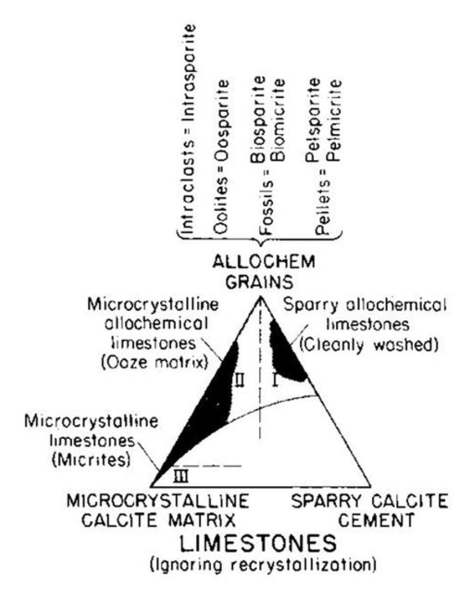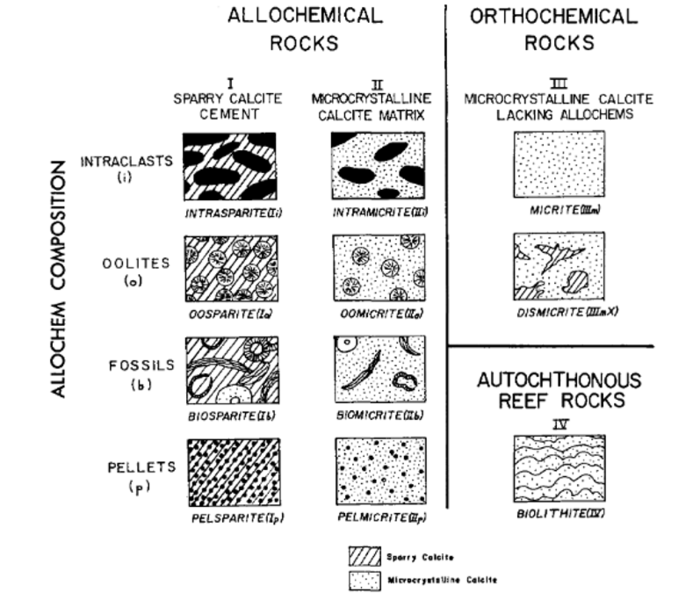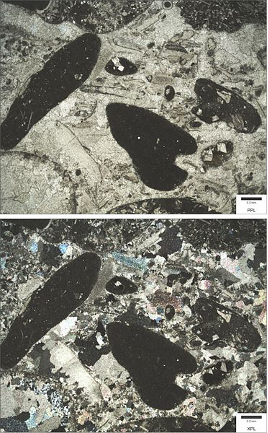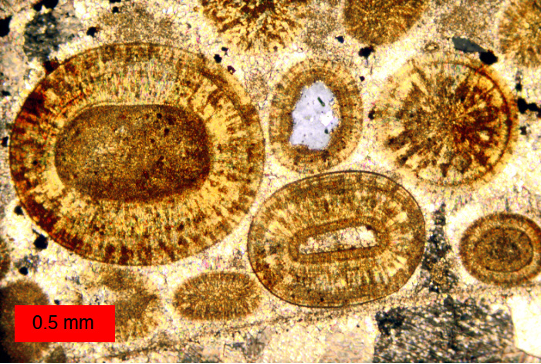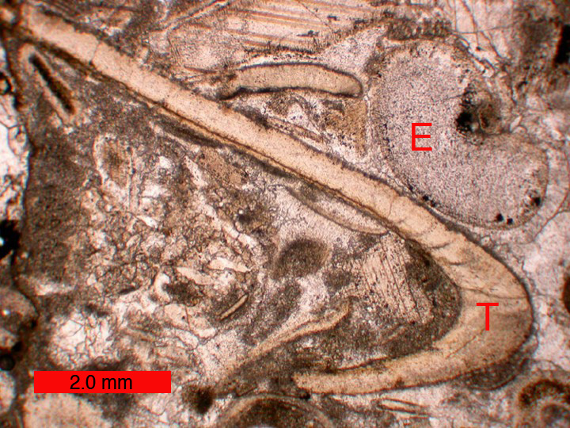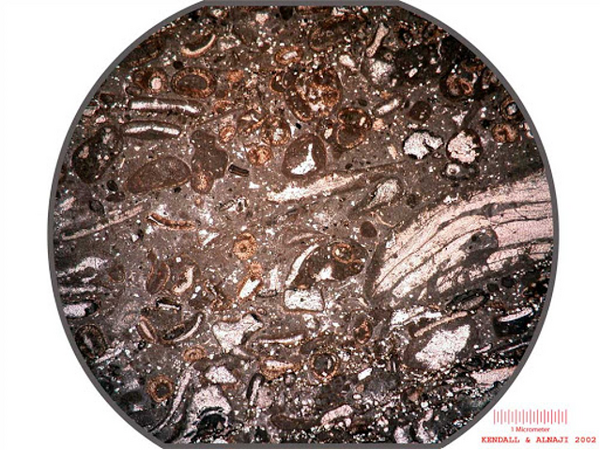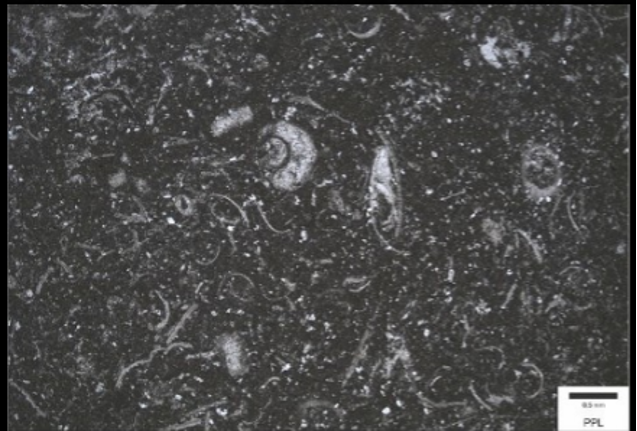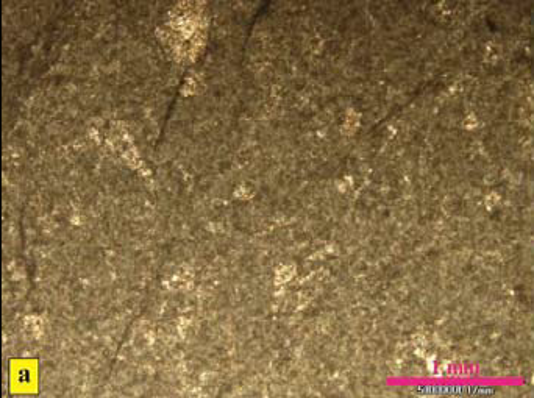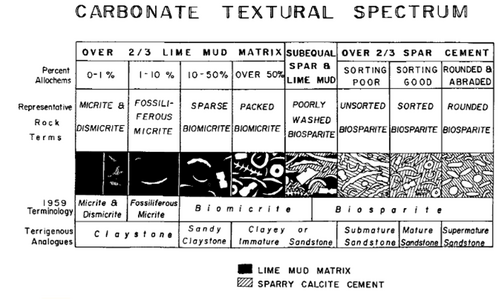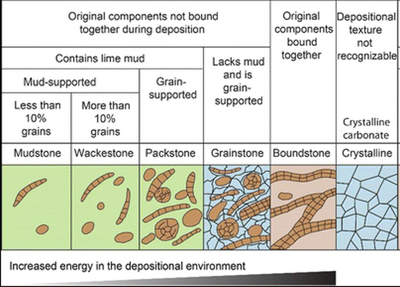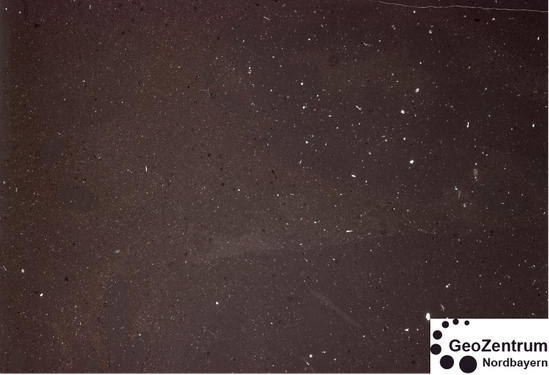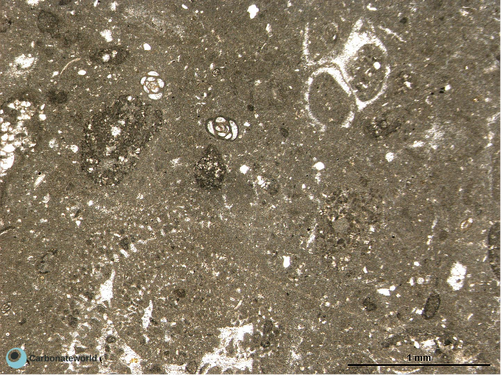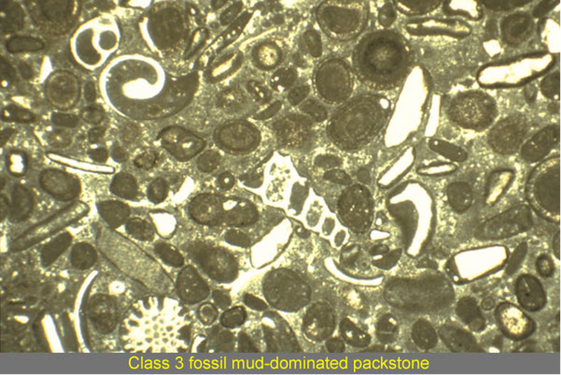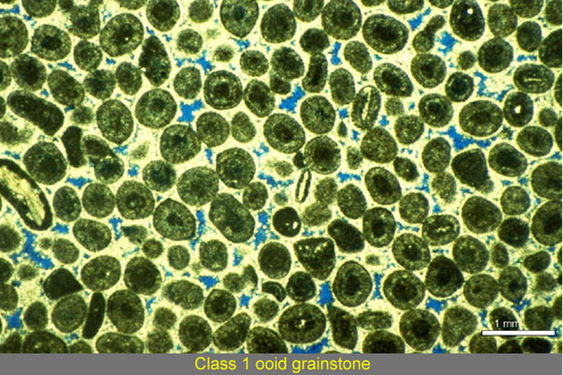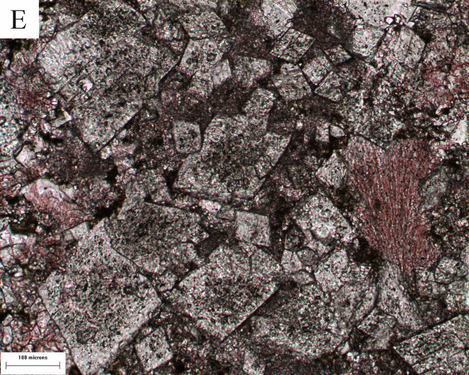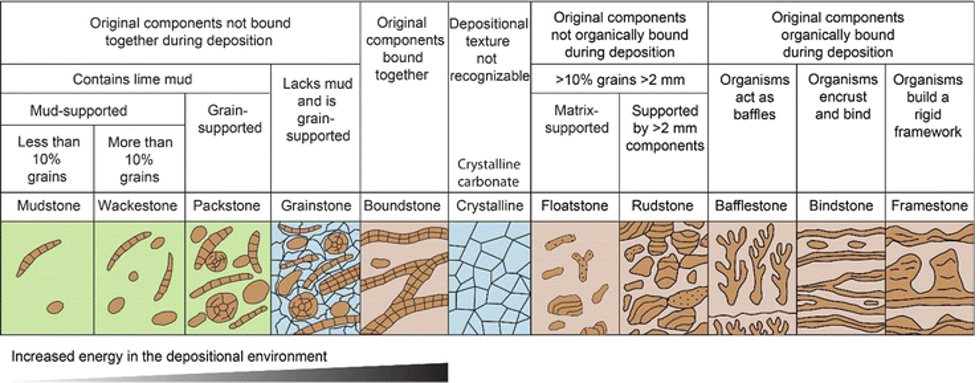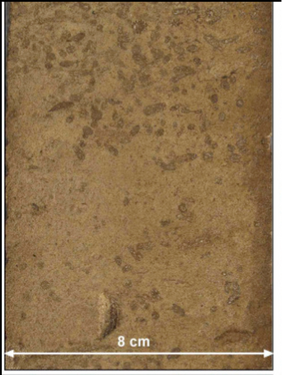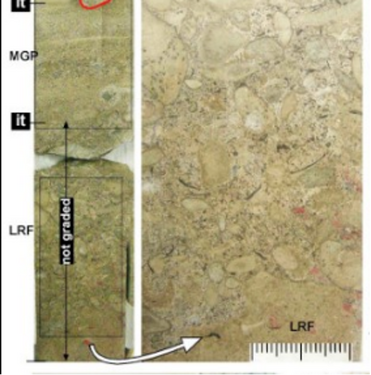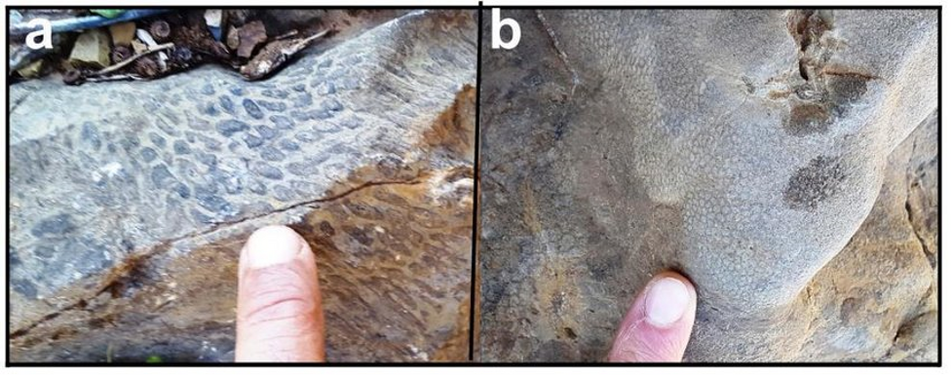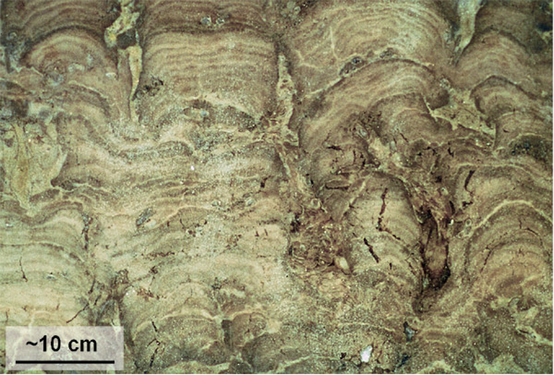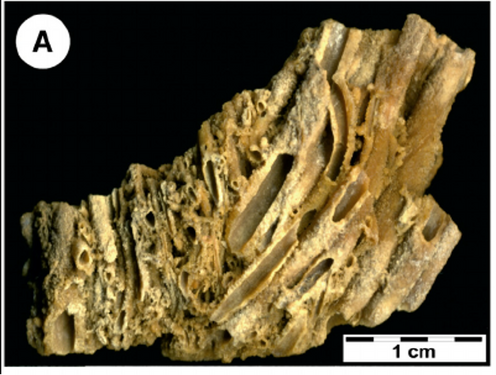Difference between revisions of "Carbonate sedimentary rocks classification"
Cwhitehurst (talk | contribs) |
Cwhitehurst (talk | contribs) |
||
| (11 intermediate revisions by the same user not shown) | |||
| Line 6: | Line 6: | ||
}} | }} | ||
In oil and gas industry, classifying carbonate rocks is a major step in core and thin section description. Two classification systems have been widely used in the industry: | In oil and gas industry, classifying carbonate rocks is a major step in core and thin section description. Two classification systems have been widely used in the industry: | ||
| − | # Folk (1959<ref name=Flk1959>Folk, R. L., 1959, [https://archives.datapages.com/data/bulletns/1957-60/data/pg/0043/0001/0000/0001.htm Practical petrographic classification of limestones]: AAPG Bulletin, v. 43, p. 1–38.</ref>, 1962) Classification | + | # Folk (1959<ref name=Flk1959>Folk, R. L., 1959, [https://archives.datapages.com/data/bulletns/1957-60/data/pg/0043/0001/0000/0001.htm Practical petrographic classification of limestones]: AAPG Bulletin, v. 43, p. 1–38.</ref>, 1962<ref name=Flk1962>Folk, R. L., 1962, [https://archives.datapages.com/data/specpubs/carbona2/data/a038/a038/0001/0050/0062.htm Spectral subdivision of limestone types], ''in'' W. E. Ham, ed., Classification of carbonate Rocks-A Symposium: [https://archives.datapages.com/data/alt-browse/aapg-special-volumes/m1.htm AAPG Memoir 1], p. 62-84.</ref>) Classification |
| − | # Dunham (1962) Classification | + | # Dunham (1962<ref name=Dnhm>Dunham, R. J., 1962, [https://archives.datapages.com/data/specpubs/carbona2/data/a038/a038/0001/0100/0108.htm Classification of carbonate rocks according to depositional texture], ''in'' W. E. Ham, ed., Classification of Carbonate Rocks: [https://archives.datapages.com/data/alt-browse/aapg-special-volumes/m1.htm AAPG Memoir 1], p. 108–121.</ref>) Classification |
Both classifications provide an indication of depositional energy setting and reservoir quality. | Both classifications provide an indication of depositional energy setting and reservoir quality. | ||
| Line 14: | Line 14: | ||
* Wentworth (1922){{note|a}} [a] | * Wentworth (1922){{note|a}} [a] | ||
* Bramkamp & Powers (1958) | * Bramkamp & Powers (1958) | ||
| − | * Folk (1959<ref name=Flk1959 /> | + | * Folk (1959, 1962)<ref name=Flk1959 /><ref name=Flk1962 /> |
| − | * Dunham (1962) | + | * Dunham (1962)<ref name=Dnhm /> |
* Leignton & Pendexter (1962) | * Leignton & Pendexter (1962) | ||
* Todd (1966) | * Todd (1966) | ||
| − | * Embry & Klovan (1971) | + | * Embry & Klovan (1971)<ref name=EmbryKlvn>Embry, A. F., and J. E. Klovan, 1971, A late Devonian reef tract on northeastern Banks Island, N.W.T: Bulletin of Canadian Petroleum Geology, v. 19, no. 4, p. 730–781.</ref> |
* Wright (1992) | * Wright (1992) | ||
* Hallsworth & Knox (1999) | * Hallsworth & Knox (1999) | ||
| − | Among all of the attempts, Folk | + | Among all of the attempts, the Folk<ref name=Flk1959 /><ref name=Flk1962 /> and Dunham<ref name=Dnhm />, extended by Embry & Klovan<ref name=EmbryKlvn />, classifications were widely accepted. |
==Folk Classification== | ==Folk Classification== | ||
| Line 63: | Line 63: | ||
* Pelmicrite: consists of pellets with microcrystalline matrix (Figure 10). | * Pelmicrite: consists of pellets with microcrystalline matrix (Figure 10). | ||
<gallery mode=packed heights=300px widths=300px> | <gallery mode=packed heights=300px widths=300px> | ||
| − | File:GeoWikiWriteOff2021-Abdulwahab-Figure7.png|{{figure number|7}}Intramicrite | + | File:GeoWikiWriteOff2021-Abdulwahab-Figure7.png|{{figure number|7}}Intramicrite<ref>[http://sepmstrata.org/microscopic_gallery_details.aspx?gid=165&pg=1&gcid=9 SEPM Strata Microscopic Gallery]</ref> |
| − | File:GeoWikiWriteOff2021-Abdulwahab-Figure8.png|{{figure number|8}}Oomicrite | + | File:GeoWikiWriteOff2021-Abdulwahab-Figure8.png|{{figure number|8}}Oomicrite<ref>[http://www.sepmstrata.org/microscopic_gallery_details.aspx?gid=207&pg=3&gcid=11 SEPM Strata Microscopic Gallery]</ref> |
File:GeoWikiWriteOff2021-Abdulwahab-Figure9.png|{{figure number|9}}Biomicrite | File:GeoWikiWriteOff2021-Abdulwahab-Figure9.png|{{figure number|9}}Biomicrite | ||
File:GeoWikiWriteOff2021-Abdulwahab-Figure10.png|{{figure number|10}}Pelmicrite | File:GeoWikiWriteOff2021-Abdulwahab-Figure10.png|{{figure number|10}}Pelmicrite | ||
| Line 94: | Line 94: | ||
==Dunham Classification== | ==Dunham Classification== | ||
===Dunham’s Criteria=== | ===Dunham’s Criteria=== | ||
| − | Dunham classification system is based on three depositional textural features: | + | [[w:Dunham classification|Dunham's classification system]] is based on three depositional textural features: |
* The presence or absence of lime mud. | * The presence or absence of lime mud. | ||
* The abundance of grains.[j] | * The abundance of grains.[j] | ||
| Line 117: | Line 117: | ||
===Extended Dunham Classification (1971)=== | ===Extended Dunham Classification (1971)=== | ||
| − | + | Embry and Klovan<ref name=EmbryKlvn /> expanded the original Dunham classification due to the lack of: | |
| − | Embry and Klovan expanded the original Dunham classification due to the lack of: | ||
* Classifying coarse-grained (>2mm) rocks. | * Classifying coarse-grained (>2mm) rocks. | ||
* Subdividing organically-bound rocks (boundstones). | * Subdividing organically-bound rocks (boundstones). | ||
The extended Dunham Classification is shown in Figure 18. | The extended Dunham Classification is shown in Figure 18. | ||
| + | [[File:GeoWikiWriteOff2021-Abdulwahab-Figure18.png|center|framed|200px|{{Figure number|18}}Extended Dunham classification (1971)]] | ||
====Coarse-Grained Rocks Classification==== | ====Coarse-Grained Rocks Classification==== | ||
* Floatstone: a matrix-supported rock with > 10% of grains >2mm and original components are not organically bounded together during deposition (Figure 19). | * Floatstone: a matrix-supported rock with > 10% of grains >2mm and original components are not organically bounded together during deposition (Figure 19). | ||
* Rudstone: a grain-supported rock with > 10% of grains >2mm and original components are not organically bounded together during deposition (Figure 20). | * Rudstone: a grain-supported rock with > 10% of grains >2mm and original components are not organically bounded together during deposition (Figure 20). | ||
| + | <gallery mode=packed heights=250px widths=250px> | ||
| + | File:GeoWikiWriteOff2021-Abdulwahab-Figure19.png|{{figure number|19}}Floatstone | ||
| + | File:GeoWikiWriteOff2021-Abdulwahab-Figure20.png|{{figure number|20}}Rudstone | ||
| + | </gallery> | ||
| + | |||
====Organically-Bound Rocks Subdivision==== | ====Organically-Bound Rocks Subdivision==== | ||
* Bafflestone: in situ organically-bound rock in which organisms act as baffles (Figure 21). | * Bafflestone: in situ organically-bound rock in which organisms act as baffles (Figure 21). | ||
* Bindstone: in situ organically-bound rock in which organisms encrust and bind (Figure 22). | * Bindstone: in situ organically-bound rock in which organisms encrust and bind (Figure 22). | ||
* Framestone: in situ organically-bound rock in which organisms build a rigid framework (Figure 23).[k] | * Framestone: in situ organically-bound rock in which organisms build a rigid framework (Figure 23).[k] | ||
| + | <gallery mode=packed heights=250px widths=250px> | ||
| + | File:GeoWikiWriteOff2021-Abdulwahab-Figure21.png|{{figure number|21}}Bafflestone | ||
| + | File:GeoWikiWriteOff2021-Abdulwahab-Figure22.png|{{figure number|22}}Bindstone | ||
| + | File:GeoWikiWriteOff2021-Abdulwahab-Figure23.png|{{figure number|23}}Framestone | ||
| + | </gallery> | ||
===Depositional Energy Setting and Reservoir Quality Indications=== | ===Depositional Energy Setting and Reservoir Quality Indications=== | ||
| Line 137: | Line 147: | ||
Rudstones and framestones are usually formed in high-energy settings (above wave base). | Rudstones and framestones are usually formed in high-energy settings (above wave base). | ||
Organically-bound rocks show good reservoir quality if the skeletal growth is interconnected. | Organically-bound rocks show good reservoir quality if the skeletal growth is interconnected. | ||
| − | |||
| − | |||
| − | |||
| − | |||
| − | |||
| − | |||
| − | |||
| − | |||
| − | |||
==Notes== | ==Notes== | ||
| Line 161: | Line 162: | ||
==References== | ==References== | ||
| − | {{reflist}} | + | {{reflist}} |
| − | |||
| − | |||
| − | |||
| − | |||
| − | |||
| − | |||
| − | |||
| − | |||
| − | |||
| − | |||
| − | |||
| − | |||
| − | |||
| − | |||
| − | |||
| − | |||
| − | |||
| − | |||
| − | |||
| − | |||
| − | |||
| − | |||
| − | |||
| − | |||
| − | |||
| − | |||
| − | |||
| − | |||
| − | |||
| − | |||
| − | |||
| − | |||
| − | |||
| − | |||
| − | |||
| − | |||
| − | |||
| − | |||
| − | |||
| − | + | ==Other Sources== | |
| + | * Gregg, Jay. (December 18). Limestone Petrology. Missouri S&T. https://web.mst.edu/~greggjay/carbonate_page/lsgallery/pages/c-ACS190_10.htm | ||
| + | * Sahraeyan, Mohammad. (2013, June). Sedimentary Basin Analysis of Sachun Formation in Southwestern Iran: Implication for Sedimentary Environments and Tectonic Setting. ResearchGate. https://www.researchgate.net/figure/Photomicrographs-showing-micrite-and-pelmicrite-in-the-argillaceous-limestone-facies-of_fig8_262337097 | ||
| + | * K. Bjørlykke (ed). Petroleum Geoscience: From Sedimentary Environments to Rock Physics, DOI 10.1007/978-3-642-34132-8_5, Ⓒ Springer-Verlag Berlin Heidelberg 2015. | ||
| + | * Carbonate Rock Classification. Carbonateworld. https://carbonateworld.com/carbonate-atlas/carbonate-rock-classification/images/wackstone/ | ||
| + | * F. Jerry Lucia. Estimating Permeability in Carbonates Using the Rock-Fabric Method. Bureau of Economic Geology. https://www.beg.utexas.edu/lmod/_IOL-CM07/cm07-step02a.htm | ||
| + | * Ardakani, Omid H. (2013, June). Diagenetic evolution and associated mineralization of Middle Devonian carbonates, southwestern Ontario, Canada. ResearchGate. https://www.researchgate.net/figure/Thin-section-photomicrographs-of-Middle-Devonian-rocks-A-Syntaxial-and-equant-calcite_fig3_235413575 | ||
| + | * Al-Awwad, Saad F. & pomar, Luis. (2015, May 21). Origin of the rudstone–floatstone beds in the Upper Jurassic Arab-D reservoir, Khurais Complex, Saudi Arabia. ScienceDirect. https://www.sciencedirect.com/science/article/pii/S0264817215001634 | ||
| + | * Khanaqa, Polla. (2018, December). Stratigraphy and Facies Analysis of the Govanda Formation from Western Zagros, Kurdistan Region, Northeastern Iraq. ResearchGate. https://www.researchgate.net/figure/a-Photo-of-the-Coral-Bafflestone-of-Barda-Balaka-Outcrop-Between-the-stems-Fine_fig12_330094098 | ||
| + | * Bindstone. Bureau of Economic Geology. https://www.beg.utexas.edu/lmod/_IOL-CM02/st21-ancbindstone.htm | ||
| + | * Camuera, Jon. (2014, July). Origin and palaeo-environmental significance of the Berrazales carbonate spring deposit, North of Gran Canaria Island, Spain. ResearchGate. https://www.researchgate.net/figure/A-Framestone-facies-composed-of-parallel-plant-moulds-coated-with-calcite-B-Plant_fig4_283498781 | ||
| + | * Lokier, Stephen W.; Al Junaibi, Mariam (2016). "The petrographic description of carbonate facies: are we all speaking the same language?". Sedimentology. 63 (7): 1843–1885. doi:10.1111/sed.12293 | ||
Latest revision as of 14:09, 19 December 2023
| Wiki Write-Off Entry | |
|---|---|

| |
| Author | Zainab Al Abdulwahab |
| Affiliation | Saudi Aramco |
| Competition | 2021 Middle East Wiki Write Off |
In oil and gas industry, classifying carbonate rocks is a major step in core and thin section description. Two classification systems have been widely used in the industry:
Both classifications provide an indication of depositional energy setting and reservoir quality.
History
Various classification systems had been proposed for both academia and industry purposes:
- Wentworth (1922)Template:Note [a]
- Bramkamp & Powers (1958)
- Folk (1959, 1962)[1][2]
- Dunham (1962)[3]
- Leignton & Pendexter (1962)
- Todd (1966)
- Embry & Klovan (1971)[4]
- Wright (1992)
- Hallsworth & Knox (1999)
Among all of the attempts, the Folk[1][2] and Dunham[3], extended by Embry & Klovan[4], classifications were widely accepted.
Folk Classification
Folk’s Criteria
Folk's classification system is based on three basic components of limestone:
- Allochems (sediment grains): framework component of the rock. There are four major types of allochems in Folk system: intraclasts, oolites, fossils, and pellets.
- Microcrystalline lime mud: matrix component of the rock < 4 μm in size.
- Sparry calcite cement (sparite): pore-filling component precipitated during deposition.
Major Families Classification
Based on the relative proportions of matrix and pore-filling components surrounding the framework component, Folk defined three major families plotted on a triangular diagram (Figure 1).
- Family I: sparry allochemical limestone that consists of allochems cemented by sparry calcite cement.[b]
- Family II: microcrystalline allochemical limestone that consists of > 10% allochems within lime mud.
- Family III: microcrystalline limestone (micrite) that consists of 0-10% allochems within mud. In other words, composes almost entirely of mud.[c]
Folk defined a fourth family based on in situ organic growth deposits: biolithite.[d]
Subdivision of Major Families
Family I and II of Folk’s system could be subdivided based on the type of allochems presented. The most important types of allochems are: intraclasts, oolites, fossils, and pellets respectively. A total of eight subdivisions are diagrammatically presented in Figure 2.[e]
Family I subdivisions
- Intrasparite: consists of intraclasts with sparry calcite cement (Figure 3).
- Oosparite: consists of oolites with sparry calcite cement (Figure 4).
- Biosparite: consists of fossils with sparry calcite cement (Figure 5).
- Pelsparite: consists of pellets with sparry calcite cement (Figure 6).
Family II subdivisions
- Intramicrite: consists of intraclasts with microcrystalline matrix (Figure 7).
- Oomicrite: consists of oolites with microcrystalline matrix (Figure 8).
- Biomicrite: consists of fossils with microcrystalline matrix (Figure 9).
- Pelmicrite: consists of pellets with microcrystalline matrix (Figure 10).
Depositional Energy Setting and Reservoir Quality Indications
Generally, Family I rocks are formed in high-energy settings and show good reservoir quality, especially if they are partially cemented. Oosparite is considered to be the best reservoir quality rock. It is usually characterized by good porosity & permeability, good sorting, and cross-bedding. It is mainly formed near strong offshore currents such as submarine shoals.[f] Family II & III rocks are formed in low-energy settings and show poor reservoir quality. They usually formed in deep water and restricted settings where the current is not strong enough to winnow away the lime mud.[g] [h]
Spectral Subdivision of Limestones
In 1962, Folk proposed the spectral subdivision. He subdivided the 3 major families into eight types forming a sequential transitional spectrum of energy level in which the first type represents the lowest energy, and the last type represents the highest energy (Figure 11).
Criteria
- For rocks dominated by lime mud, Folk considered the percentage of allochems presented.
- For rocks dominated by sparry calcite cement, Folk considered the sorting and rounding of allochems presented.
Subdivisions
Folk proposed a total of eight types representing a gradational transition of energy level from low to high. Considering, for instance, fossils to be the major allochems in the system[i], the sequential subdivisions are:
- Micrites and dismicrites: rocks consist entirely of lime mud.
- Fossiliferous micrites and dismicrites: rocks consist of 1-10% allochems.
- Sparse biomicrites: rocks consist of 10-50% allochems floating in the matrix.
- Packed biomicrites: rocks consist of > 50% packed allochems.
- Poorly washed biosparites: rocks consist of almost equal amounts of lime mud and sparry calcite cement in which the current was not strong enough to winnow away all lime mud particles.
- Unsorted biosparites: poorly sorted rocks in which the current was strong enough to winnow away lime mud particles, but the allochems are still not sorted.
- Sorted biosparites: well-sorted rocks in which the allochems are still not well-rounded and abraded.
- Rounded biosparites: well-sorted and well-rounded rocks in which the allochems underwent intense abrasion.
Dunham Classification
Dunham’s Criteria
Dunham's classification system is based on three depositional textural features:
- The presence or absence of lime mud.
- The abundance of grains.[j]
- The presence of in situ organic binding
Dunham (1962) Classification
The original Dunham classification system composes of six classes summarized in Figure 12:
- Mudstone: a mud-supported rock with < 10% grains, and original components are not organically bounded together during deposition (Figure 13).
- Wackestone: a mud-supported rock with > 10% grains, and original components are not organically bounded together during deposition (Figure 14).
- Packstone: a grain-supported rock with lime mud presented, and original components are not organically bounded together during deposition (Figure 15).
- Grainstone: a grain-supported rock with lime mud absent, and original components are not organically bounded together during deposition (Figure 16).
- Boundstone: a rock with the presence of organic components bounded together during deposition.
- Crystalline: a rock with unrecognizable depositional texture (Figure 17).
Extended Dunham Classification (1971)
Embry and Klovan[4] expanded the original Dunham classification due to the lack of:
- Classifying coarse-grained (>2mm) rocks.
- Subdividing organically-bound rocks (boundstones).
The extended Dunham Classification is shown in Figure 18.
Coarse-Grained Rocks Classification
- Floatstone: a matrix-supported rock with > 10% of grains >2mm and original components are not organically bounded together during deposition (Figure 19).
- Rudstone: a grain-supported rock with > 10% of grains >2mm and original components are not organically bounded together during deposition (Figure 20).
Organically-Bound Rocks Subdivision
- Bafflestone: in situ organically-bound rock in which organisms act as baffles (Figure 21).
- Bindstone: in situ organically-bound rock in which organisms encrust and bind (Figure 22).
- Framestone: in situ organically-bound rock in which organisms build a rigid framework (Figure 23).[k]
Depositional Energy Setting and Reservoir Quality Indications
Generally, mud-supported rocks: mudstones and wackestones are formed in low-energy settings and show poor reservoir quality. Grain-supported rocks: packstones and grainstones are formed in high-energy settings and show good reservoir quality. Grainstones is considered to be the best reservoir quality rock, especially if it is partially cemented. It is usually characterized by good porosity & permeability, and good sorting. Floatstones and bindstones are usually formed in medium-energy settings (below average wave base). Rudstones and framestones are usually formed in high-energy settings (above wave base). Organically-bound rocks show good reservoir quality if the skeletal growth is interconnected.
Notes
- [a] Early carbonate classification is grain-size based system: Calcilutite (grains < 63 μm), calcarenite (63 μm < grains < 2mm), calcirudite (grains > 2mm).
- [b] This family has restricted limits because cement by itself cannot form a rock and the supported framework component (allochems) has limited packing.
- [c] If the microcrystalline limestone had been disturbed either by bioturbation or soft-sediment deformation, the term “disturbed microcrystalline limestone” or “dismicrite” could be assigned.
- [d] Examples of biolithites are: algal biolithite and coral biolithite.
- [e] Naming of a subdivision is a composite of two parts. The first part refers to the name of the allochem. The second part refers to the family type. For Example, intrasparite: intra- refers to intraclasts, and –sparite refers to family I.
- [f] Oosparites are more common than Oomicrites because the need of strong current to form these rocks.
- [g] Intrasparites are more common than intramicrites because the need of strong current to transfer course rock fragments.
- [h] Both biosparites and biomicrites are common. However, biosparites are usually more rounded and abraded because of the strong current.
- [i] The subdivisions could be applied considering other types of allochems: intraclasts, oolites, and pellets.
- [j] The abundance of grains defines the nature of the framework. In other words, whether it is mud-supported or grain-supported.
- [k] The term “boundstone” is retained if the organic bounding type is not recognized.
References
- ↑ 1.0 1.1 1.2 Folk, R. L., 1959, Practical petrographic classification of limestones: AAPG Bulletin, v. 43, p. 1–38.
- ↑ 2.0 2.1 2.2 Folk, R. L., 1962, Spectral subdivision of limestone types, in W. E. Ham, ed., Classification of carbonate Rocks-A Symposium: AAPG Memoir 1, p. 62-84.
- ↑ 3.0 3.1 3.2 Dunham, R. J., 1962, Classification of carbonate rocks according to depositional texture, in W. E. Ham, ed., Classification of Carbonate Rocks: AAPG Memoir 1, p. 108–121.
- ↑ 4.0 4.1 4.2 Embry, A. F., and J. E. Klovan, 1971, A late Devonian reef tract on northeastern Banks Island, N.W.T: Bulletin of Canadian Petroleum Geology, v. 19, no. 4, p. 730–781.
- ↑ SEPM Strata Microscopic Gallery
- ↑ SEPM Strata Microscopic Gallery
Other Sources
- Gregg, Jay. (December 18). Limestone Petrology. Missouri S&T. https://web.mst.edu/~greggjay/carbonate_page/lsgallery/pages/c-ACS190_10.htm
- Sahraeyan, Mohammad. (2013, June). Sedimentary Basin Analysis of Sachun Formation in Southwestern Iran: Implication for Sedimentary Environments and Tectonic Setting. ResearchGate. https://www.researchgate.net/figure/Photomicrographs-showing-micrite-and-pelmicrite-in-the-argillaceous-limestone-facies-of_fig8_262337097
- K. Bjørlykke (ed). Petroleum Geoscience: From Sedimentary Environments to Rock Physics, DOI 10.1007/978-3-642-34132-8_5, Ⓒ Springer-Verlag Berlin Heidelberg 2015.
- Carbonate Rock Classification. Carbonateworld. https://carbonateworld.com/carbonate-atlas/carbonate-rock-classification/images/wackstone/
- F. Jerry Lucia. Estimating Permeability in Carbonates Using the Rock-Fabric Method. Bureau of Economic Geology. https://www.beg.utexas.edu/lmod/_IOL-CM07/cm07-step02a.htm
- Ardakani, Omid H. (2013, June). Diagenetic evolution and associated mineralization of Middle Devonian carbonates, southwestern Ontario, Canada. ResearchGate. https://www.researchgate.net/figure/Thin-section-photomicrographs-of-Middle-Devonian-rocks-A-Syntaxial-and-equant-calcite_fig3_235413575
- Al-Awwad, Saad F. & pomar, Luis. (2015, May 21). Origin of the rudstone–floatstone beds in the Upper Jurassic Arab-D reservoir, Khurais Complex, Saudi Arabia. ScienceDirect. https://www.sciencedirect.com/science/article/pii/S0264817215001634
- Khanaqa, Polla. (2018, December). Stratigraphy and Facies Analysis of the Govanda Formation from Western Zagros, Kurdistan Region, Northeastern Iraq. ResearchGate. https://www.researchgate.net/figure/a-Photo-of-the-Coral-Bafflestone-of-Barda-Balaka-Outcrop-Between-the-stems-Fine_fig12_330094098
- Bindstone. Bureau of Economic Geology. https://www.beg.utexas.edu/lmod/_IOL-CM02/st21-ancbindstone.htm
- Camuera, Jon. (2014, July). Origin and palaeo-environmental significance of the Berrazales carbonate spring deposit, North of Gran Canaria Island, Spain. ResearchGate. https://www.researchgate.net/figure/A-Framestone-facies-composed-of-parallel-plant-moulds-coated-with-calcite-B-Plant_fig4_283498781
- Lokier, Stephen W.; Al Junaibi, Mariam (2016). "The petrographic description of carbonate facies: are we all speaking the same language?". Sedimentology. 63 (7): 1843–1885. doi:10.1111/sed.12293
